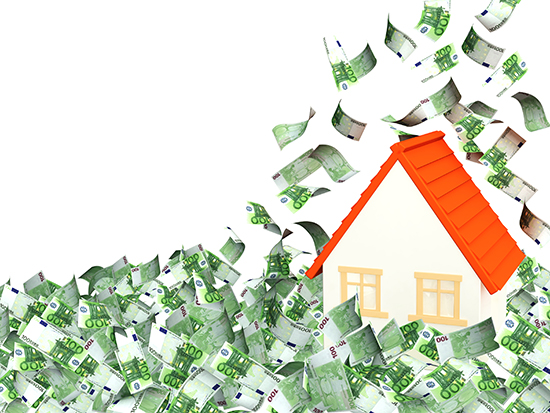As home owners, we have always been keen watchers of the house price movements in the Netherlands. More so being expats with a short-term horizon. When the corona crisis hit, dwindling
tourism, faltering businesses and falling jobs numbers looked like impending doom for the housing market. We too braced for stagnation or, worse, a drop in house prices. All of a sudden we started fearing a replay of the scenes of global financial crisis of 2008, when we lived in California, and where home prices got slashed by 30-40%. Announcements of foreclosure and short-sell popped up everywhere. As months dragged on under the pandemic, counter-intuitive for common man and economy pundits alike, house prices not just held their ground: the house price index actually continued zigzagging ever upward.
Incredibly, the biggest year-on-year rise was recorded for the month of February 2021, when owner-occupied home prices increased by the highest margin in the last twenty years – then, like now, in the middle of health crisis. According to the figures published by the Central Bureau of Statistics (CBS) and the Land Registry (Kadaster), the sentiment regarding the housing market has not been dampened by the general gloom. Far from it: the madness in the housing market has only increased. After a minor blip in 2019, the year 2020 already saw a big upswing and 2021 only promises further acceleration. In January, prices of existing owner-occupied homes rose by 9.3% compared to January of last year, followed by 10.4% in February.
Many reasons are cited for the increase in demand for houses, which in turn is reflected in the price hike. The suspension of transfer tax for first-time home buyers aged under 35 has encouraged people to move from rented to owned accommodation. Coupled with very low mortgage interest rates, this has made a purchase very rewarding at this time. In January, more than 24,500 homes were sold after the suspension of the tax for starters from 1 January. This record number was 40% more than in January 2020. In February, the number of home sales was 16,871, over 9% more than a year earlier. People wanting to upgrade to bigger houses are finding the low mortgage interest rates favourable to make the switch. In addition, the lockdown has resulted in lesser spending for entertainment and holidays, leaving more investible surplus.
While the increase in house prices is good news for around 4.4 million home owners in the Netherlands, it is also true that never before have owner-occupied homes been so expensive as now. And the prices are only rising. This is now turning into a serious barrier for most first-time buyers, preventing them from entering the housing ladder at all. In addition, there are concerns that inner cities will remain affordable only for people with high incomes. As per the CBS figures, which match a study by NVM, the Dutch estate agents’ association, since 2013 the value of homes has increased by more than 50 percent. Even so, according to NVM, about six in ten buyers now offer more than the asking price. With the scales tipped heavily towards demand against supply, the Netherlands has continued to be a seller’s market.
The rising house prices are an indicator of the severe housing shortage that has been going on for over a decade. In the global financial crisis of 2008, many construction projects came to a grinding halt. This development was worsened by the underestimation of population growth – by natural increaseor immigration, as well as the nitrogen crisis of 2020 which slowed down the granting of new building permits, and the shortage of construction workers due to the low number of graduates in this field. As a result, the number of new housing developments has always lagged behind the housing requirements in this small country.
This historic rise in house prices during a severe global calamity has only underlined the criticality of striking the right balance between demand and supply. With the population of the Netherlands projected to rise to 18.8 million by 2030, the need to build 845,000 houses by then is sacrosanct in order to tame the runaway housing prices. Right now, the exorbitant prices are forcing many to rent rather than own their dream home.
Written by Geetanjali Gupta
